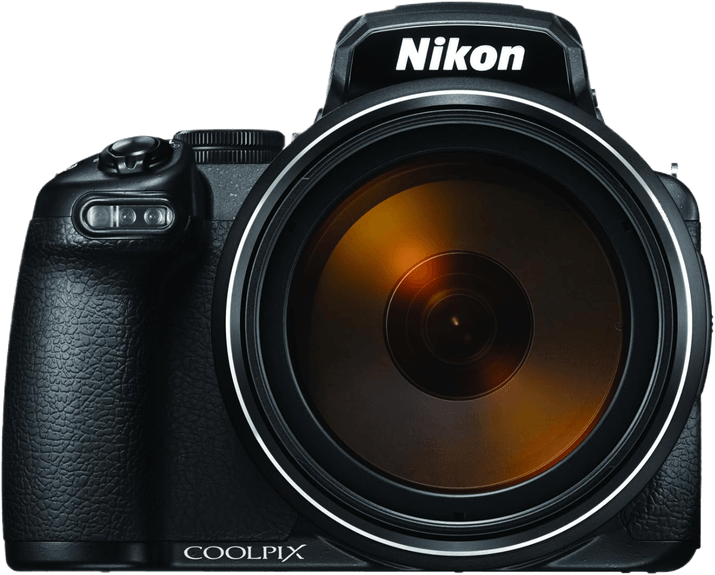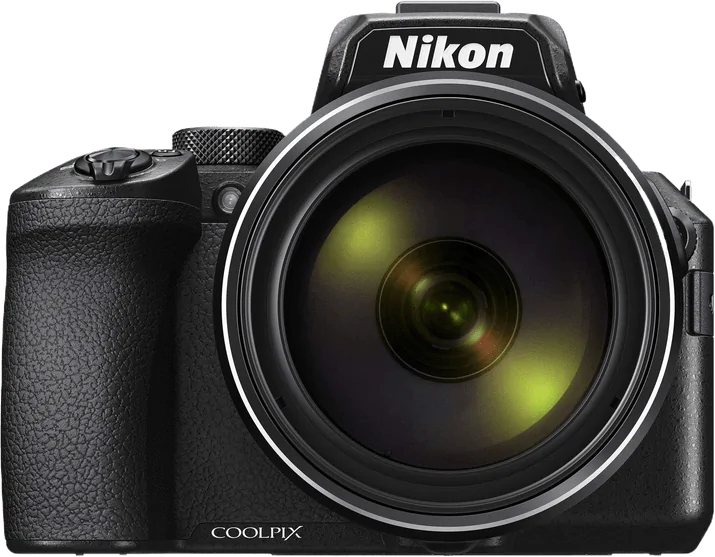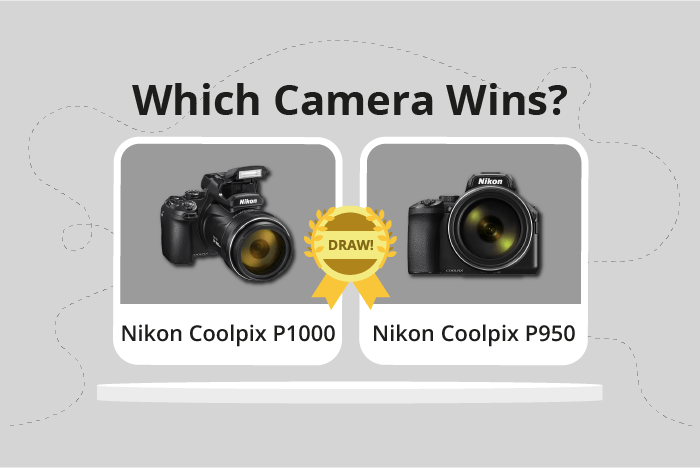Nikon Coolpix P1000 vs Coolpix P950 Comparison
Nikon Coolpix P1000

Nikon Coolpix P950

The Nikon Coolpix P1000 and Nikon Coolpix P950 both score 52/100 in our evaluation, making them equally matched in terms of general specifications. Both cameras are of the bridge type, with the P1000 being released in 2018 and the P950 in 2020. They share some common features, such as their camera type and scoring.
The P1000 has some advantages, including a larger size (146 x 119 x 181mm) and heavier weight (1415g / 3.12lbs), which may provide better stability for some users. However, it comes with a higher launch price of $999.95.
On the other hand, the P950 is more compact (140 x 110 x 150mm) and lighter (1005g / 2.22lbs), making it more portable and easier to handle. Additionally, it has a lower launch price of $799, making it more budget-friendly.
Taking these factors into account, the choice between the Nikon Coolpix P1000 and P950 depends on individual preferences for size, weight, and budget.
Nikon Coolpix P1000 vs Coolpix P950 Overview and Optics
The Nikon Coolpix P1000 and the Nikon Coolpix P950 both receive an equal score of 53/100 for their optics. These cameras share identical specifications in terms of megapixels (16), shooting speed (7), sensor type (CMOS), processor (Expeed), DXOMARK score for the sensor (69), sensor size (1/2.3″), lens mount (fixed), and image stabilization.
Despite having the same score, the P1000 has some advantages over the P950. The P1000 features a longer zoom range, allowing for better close-up shots and more versatility in various shooting situations. Additionally, the P1000 tends to produce sharper images, thanks to its superior lens quality. This advantage makes the P1000 a more appealing option for photographers who prioritize image quality and versatility in their camera choice.
On the other hand, the P950 also has its benefits. It is a lighter and more compact camera compared to the P1000. This makes it easier to carry around and handle, especially for those who value portability in their camera equipment. The P950 also tends to have a faster autofocus system, which can be helpful for capturing fast-moving subjects or shooting in low light conditions.
In comparing the Nikon Coolpix P1000 and P950, it is clear that each camera offers distinct advantages. The P1000 excels in image quality and zoom range, making it a better choice for photographers who prioritize these features. Meanwhile, the P950’s lighter weight and faster autofocus system make it a more suitable option for those who value portability and speed. Ultimately, the right choice depends on the individual photographer’s needs and preferences.
Nikon Coolpix P1000 vs Coolpix P950 Video Performance
The Nikon Coolpix P1000 and Nikon Coolpix P950 both have a video score of 83/100, indicating that they share similar video capabilities. Both cameras offer a maximum video resolution of 4K and dimensions of 3840 x 2160, allowing users to capture high-quality footage. Additionally, both cameras have a maximum video frame rate of 60fps and built-in time-lapse functionality.
Despite having the same video score, the Nikon Coolpix P1000 has some features that make it a slightly better choice for video capture. The P1000’s superior optical zoom range allows users to capture more detailed footage from a distance, making it a great choice for wildlife videography or sporting events. However, the P1000’s larger size and weight may be a drawback for some users who prioritize portability.
On the other hand, the Nikon Coolpix P950, while offering the same video capabilities, has a smaller size and lighter weight, making it a more convenient option for those who value portability. This may be especially appealing to travelers or vloggers who need to carry their camera for extended periods.
Both the Nikon Coolpix P1000 and P950 have impressive video capabilities, with the P1000 offering a slight edge in terms of optical zoom range. However, the P950’s smaller size and lighter weight may make it a more suitable choice for those who prioritize portability. Ultimately, the decision between these two cameras will come down to the individual user’s preferences and needs.
Nikon Coolpix P1000 vs Coolpix P950 Features and Benefits
The Nikon Coolpix P1000 and Nikon Coolpix P950 both have a feature score of 57/100, making them equal in this aspect. They share several common specifications, including a 3.2-inch screen size, a screen resolution of 921,600 dots, and the absence of a touchscreen. Both cameras also have a flip screen, GPS, WIFI, and Bluetooth capabilities.
Despite the equal feature scores, the P1000 has certain advantages over the P950. The P1000 offers a longer zoom range, allowing photographers to capture distant subjects with greater detail. Additionally, the P1000 has a slightly larger sensor, which can result in better image quality in certain shooting conditions.
On the other hand, the P950 also has its own benefits. The P950 is a lighter and more compact camera, making it easier to carry around and use for extended periods. Furthermore, the P950 has a faster continuous shooting speed than the P1000, enabling photographers to capture fast-moving subjects more effectively.
Taking these factors into account, the Nikon Coolpix P1000 may be more suitable for photographers who prioritize zoom range and image quality, while the Nikon Coolpix P950 might be a better option for those who value portability and faster continuous shooting. Although they have the same feature score, each camera offers unique benefits that cater to different photography needs and preferences.
Nikon Coolpix P1000 vs Coolpix P950 Storage and Battery
The Nikon Coolpix P1000 and the Nikon Coolpix P950 both score 29/100 in storage and battery. They share identical specifications, such as having one memory card slot and accepting SD, SDHC, and SDXC cards with UHS-I compatibility. Both cameras also use the EN-EL20a battery type and offer USB charging capabilities.
However, the P950 slightly outperforms the P1000 in battery life, providing 290 shots compared to the P1000’s 250 shots. This difference makes the P950 more suitable for longer shooting sessions without needing to recharge or replace the battery.
On the other hand, the P1000 does not have any notable advantages over the P950 in terms of storage and battery. Both cameras possess the same storage capabilities, and the P1000’s battery life is shorter than the P950’s.
Taking these factors into account, the P950 is the better choice for users who prioritize longer battery life, while the P1000 offers no significant advantages in storage and battery performance.
Alternatives to the Nikon Coolpix P1000 and Coolpix P950
Are you still undecided about which camera is right for you? Have a look at these popular comparisons that feature the Nikon Coolpix P1000 or the Nikon Coolpix P950:

